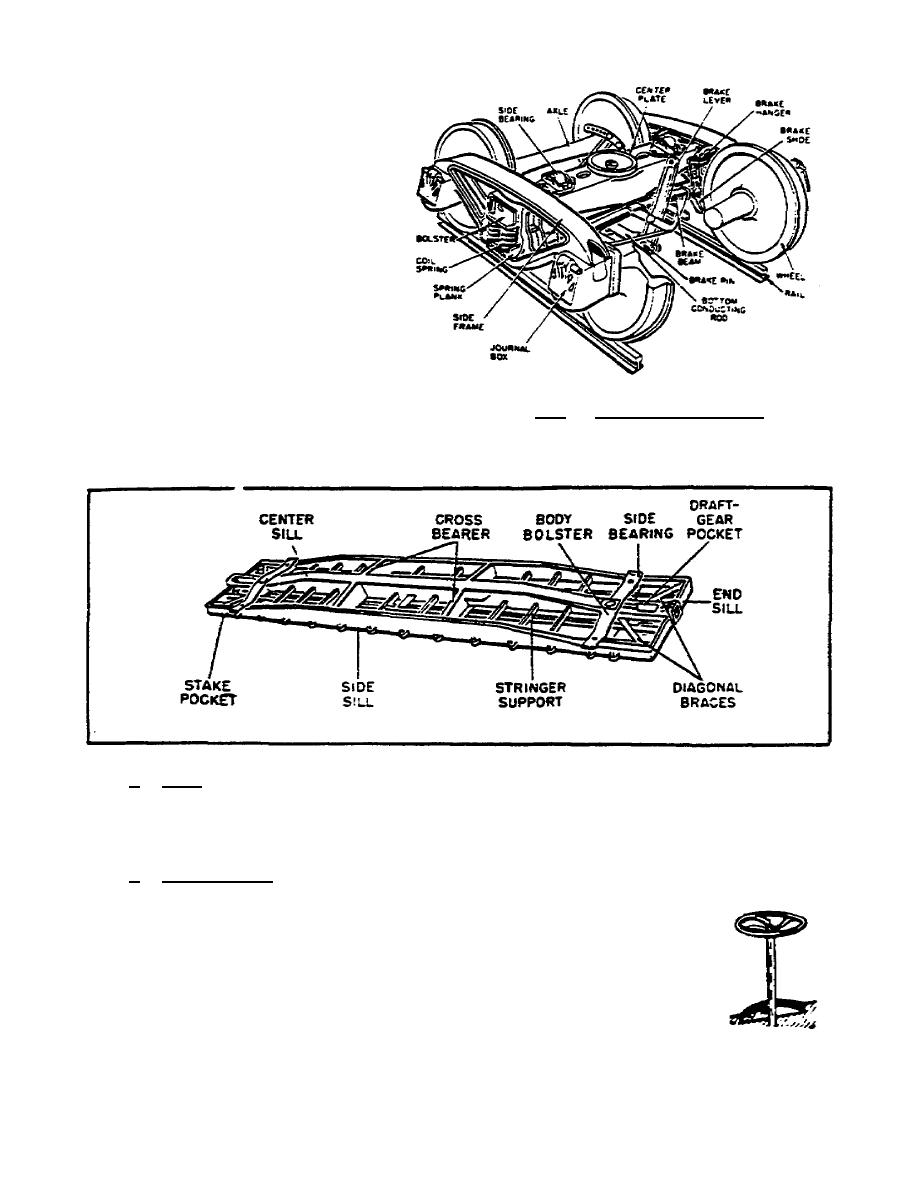
long members on either side
are called side sills, the
long member in the center
paralleling the side sills is
the center sill, and the
short end members are end
sills, as shown in the sketch
below. Some flatcars have
two center sills, as shown on
the underframe in figure 1.2.
Stake pockets attached to the
side sills support stakes
that form a temporary side
above the deck. A transverse
intermediate member at each
end, called a body bolster,
contains a projection that
Figure 1.4. Truck Components.
fits down into the center
plate receptacle on the truck. You can see the center plate in the middle
of the truck sketched in figure 1.4.
c. Deck. The platform on top of the flatcar where the load rests is
called the deck. Normally constructed of tongue and groove wood planking
for a solid fit, the deck is secured to the underframe. Figures 1.1 and 1.2
illustrate the deck clearly.
d. Brake wheel. Located at one end of each car is a brake wheel used
to operate the handbrake. Although our "typical" flatcar in figure 1.1
shows the brake wheel under and to the side of the deck, the
more common position is upright, as in the sketch, and
extending above the level of the deck. When the brake wheel is
used, it securesholdsa car at a siding, much as the
handbrake in your car keeps it from moving once it is parked.
In some yard or road operations, the handbrake is used to slow
down or stop a car when it is in
6



 Previous Page
Previous Page
